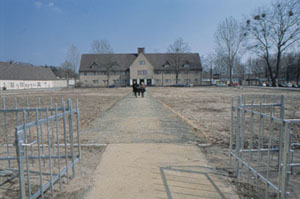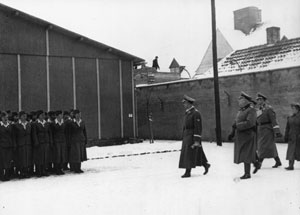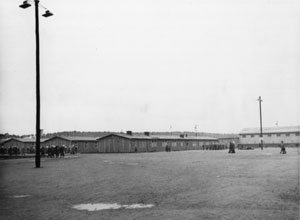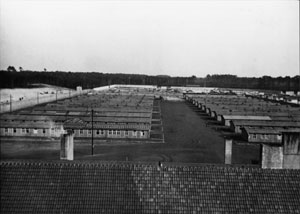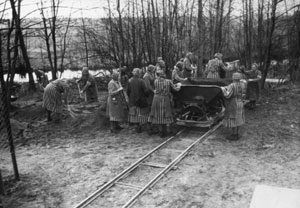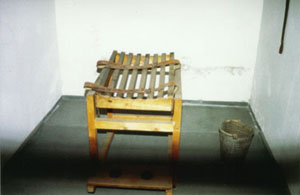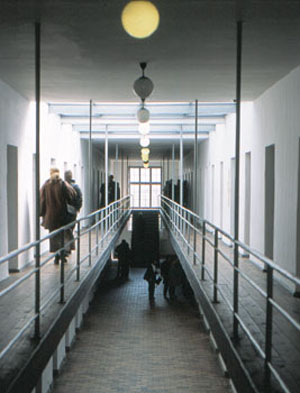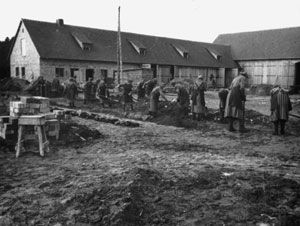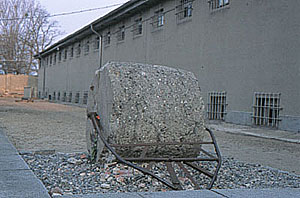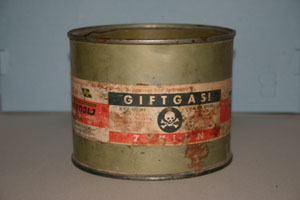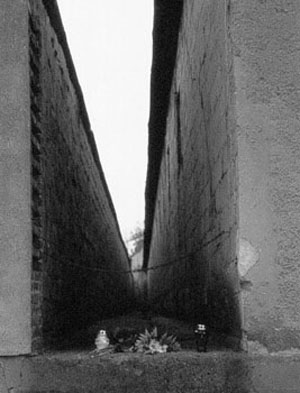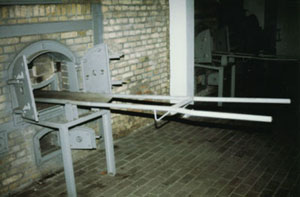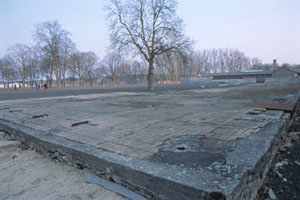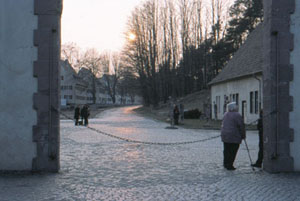Click on the grey arrow (>) to continue in the exhibition to artefact pictures
Click on the grey arrow (<) to start the exhibition over again
click on the red arrow (<) to go backwards in the text
Click on the blue headlines to read background texts
Click on the questionmark (?) for info and orientation in the exhibition
click on the green arrow (>) for more text on chosen subject
backgrounds
/
Ravensbrück, the camp
In 1939 the Nazi concentration camp for women in Ravensbrück was ready. Women were brought there from all over war-torn Europe : The women were used as slave labour in the factories in and around the camp.
Some 132,000 women and children were locked up in Ravensbrück. Many of them died of undernourishment, physical abuse, executions, diseases, and medical experiments. At the end of 1944 a gas chamber was built, where almost six thousand women were murdered.
In April 1945 many of the prisoners were brought to Sweden in the White Buses. On 30 April 1945 the Red Army liberated the camp.
Ravensbrück was a labour camp. Women from many countries
in war-torn Europe were brought there.
Jews were brought to the camp from Germany, Poland,
and other occupied countries as part of the Nazis’ planned
extermination of the Jews. The Roma were persecuted in a
similar way and brought to Ravensbrück.
On several occasions the camp was emptied of these groups, who
were sent on to meet their death in various extermination camps.
Some 25% of the prisoners in Ravensbrück were Polish women
who were not Jews. They were often branded by the Nazis
as political prisoners. Many women were arrested for no reason
other than that they were Poles and were brought to Ravensbrück
as slave labour. According to the Nazi ideology the Slavs, for example
the Poles and Russians, were “Untermenschen” (subhumans).
Other people transported to Ravensbrück were those categorized
as political opponents of Nazi rule and homosexuals,
Jehovah’s Witnesses, and those whom the Nazis branded as “asocial”.





Click on the question mark (?) for technical instructions and help with orientation.
Click on the grey arrow (<) to start over again.
Click on the grey arrow (>) to continue in the exhibition to artefact pictures
Click on the grey arrow (>) to continue the web-exhibition.


